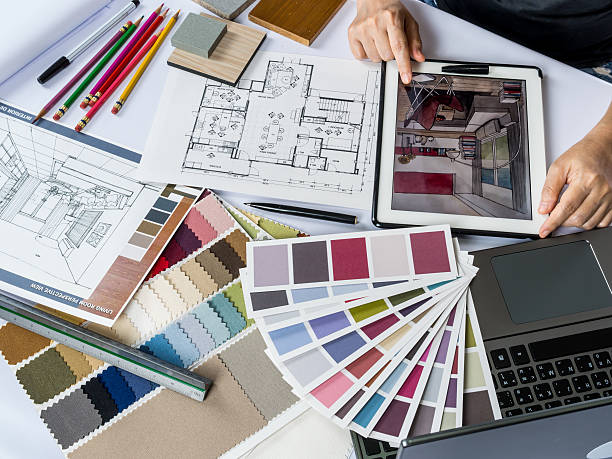When you're aiming to refresh your living environment, hiring an interior designer can be a game-changer. With their trained eye and deep understanding of aesthetics, functionality, and spatial arrangement, interior designers help you unlock the full potential of your home. But what if you're not quite ready to hire a professional just yet? With a few expert tips and strategies from seasoned pros, you can transform your space like a designer would—without breaking the bank.
In this blog, we’ll dive into the best styling techniques straight from professional interior designers, so you can elevate your home with confidence and style.
1. Understand Your Space
Before diving into decor, take a step back and assess your room. Measure the dimensions, note where natural light enters, and identify focal points such as a fireplace, a large window, or an art piece. Interior designers emphasize the importance of understanding flow and function before adding layers of design. Ask yourself:
- What is the purpose of this room?
- Who uses it and how often?
- What mood do I want to create?
With clear answers, you’ll make intentional choices that align with your goals for the space.
2. Start with a Neutral Base
Many interior designers recommend beginning with a neutral palette. Whites, grays, beiges, and taupes create a timeless backdrop that allows you to layer in color, texture, and personality. Neutral tones don’t mean boring—they give you flexibility to switch things up seasonally or as your taste evolves.
3. Use the Rule of Three
The rule of three is a staple in interior design. It refers to grouping items in threes to create visual interest. Whether it’s three candles on a coffee table, three frames on a wall, or three textures in a room (like leather, wood, and linen), odd numbers feel more balanced and organic than even-numbered groupings.
4. Prioritize Lighting
Lighting can make or break a room. A professional interior designer always considers layers of lighting: ambient (overall light), task (focused light for activities), and accent (decorative lighting to highlight features). To emulate this, use a mix of overhead lights, floor lamps, table lamps, and sconces.
Tips:
- Use warm LED bulbs to create a cozy atmosphere.
- Install dimmer switches for flexibility.
- Place mirrors strategically to reflect light and open up smaller rooms.
5. Mix Textures and Materials
A professionally designed room often feels rich and inviting because of the thoughtful mix of materials and textures. Don’t be afraid to pair metal with wood, velvet with linen, or matte with glossy finishes. This variety keeps your space from feeling flat and adds layers of visual interest.
6. Incorporate Statement Pieces
Every room should have at least one standout element. It could be a dramatic chandelier, an oversized piece of art, a bold area rug, or a unique vintage find. Interior designers use statement pieces to draw the eye and express personality. Just be sure not to overdo it—balance is key.
7. Don't Forget the Ceiling
Often overlooked, the ceiling offers a hidden canvas for creative design. Consider painting it a subtle hue, adding wooden beams, or using wallpaper to add a touch of drama. A decorated ceiling adds depth and polish that many homeowners miss.
8. Create Zones in Open Spaces
In open-concept homes, interior designers use furniture and rugs to define areas. A sofa can delineate the living room from the dining area, while different rugs anchor each space. This approach improves functionality while maintaining an open, airy feel.
9. Bring the Outdoors In
Biophilic design—a concept that connects interiors to nature—is a major trend among professional designers. Houseplants, natural materials (like jute, wood, and stone), and large windows all contribute to a calm, restorative atmosphere. Even a few low-maintenance plants can refresh the mood and air quality of your home.
10. Personalize Your Decor
Great interior design reflects the people who live in the space. Don’t be afraid to showcase family photos, heirlooms, travel souvenirs, or original artwork. These items tell your story and make your home feel unique and lived-in.
11. Use Color Strategically
While a neutral base is safe and sophisticated, color can energize or soothe depending on its application. Designers often follow the 60-30-10 rule: 60% dominant color (walls), 30% secondary color (furniture), and 10% accent color (accessories). Use this formula to create balance and harmony in your palette.
12. Edit Ruthlessly
Professional interior designers know that less is often more. Clutter distracts the eye and diminishes the impact of your design. Keep only what is beautiful, functional, or meaningful. Rotate decor items seasonally to keep things fresh and purposeful.
13. Invest in Quality Basics
Though it may be tempting to decorate on the cheap, seasoned designers agree that it’s wise to invest in key pieces like a solid sofa, a well-made dining table, or custom window treatments. These staples serve as the foundation of your room and withstand the test of time.
14. Layer Rugs for Interest
Layering rugs is a trick many designers use to add dimension to a room. A larger neutral rug can anchor the space, while a smaller patterned or colorful rug on top can define a seating area and inject character.
15. Follow Your Instincts
While there are guidelines to help you design like a pro, don’t forget that your home should reflect you. Trust your gut. If something makes you happy—even if it breaks a design "rule"—go for it. Your home should feel like a sanctuary, not a showroom.
Final Thoughts
Working with an interior designer provides unmatched expertise, but with the right knowledge and inspiration, you can create a space that’s equally beautiful, functional, and unique on your own. Whether you're starting from scratch or simply refreshing your style, these expert tips are your blueprint for success.
Remember: great design isn’t about following trends—it’s about creating a home that feels right to you.





Comments